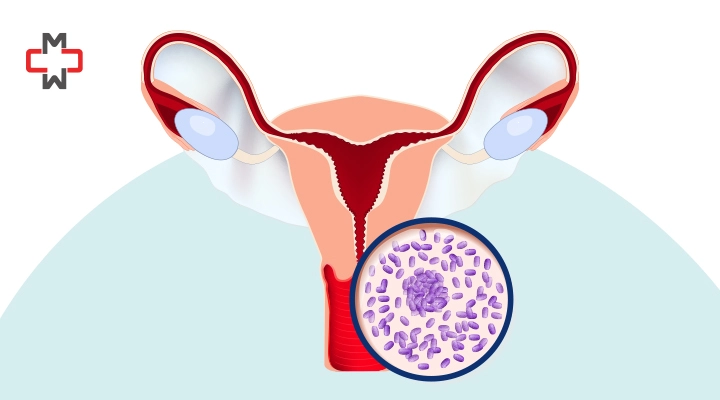Urine cultures are essential in diagnosing urinary tract infections (UTIs) and other urogenital conditions. However, sometimes the results indicate mixed urogenital flora, which can complicate diagnosis. This term refers to the presence of multiple bacterial species in a urine sample, which may result from contamination, polymicrobial infections, or underlying urogenital health issues.
In this article, we’ll explore the causes, diagnostic challenges, clinical implications, treatment options, and preventive measures related to mixed urogenital flora in urine.
What is Urogenital Flora?
The urogenital flora hosts a complex microbiome that varies by age, sex, and health conditions. This normal bacterial ecosystem plays a vital role in preventing infections and maintaining overall urogenital health.
Common Bacteria in the Urogenital Tract
- Lactobacillus (protective bacteria in women)
- Escherichia coli (E. coli) (can cause UTIs)
- Enterococcus species
- Corynebacterium
- Staphylococcus species
- Peptostreptococci
While a balanced urogenital flora is beneficial, overgrowth or the presence of multiple bacterial species in a urine sample can signal a problem, often categorized as mixed urogenital flora.
Mixed Urogenital Flora Meaning in a Urine Test
What does mixed urogenital flora mean? Mixed flora in a urine culture suggests the presence of two or more bacterial species. This finding can have three major implications:
- Contamination during sample collection (most common reason)
- True polymicrobial infection
- Natural variation in urogenital microbiota
Understanding the cause is necessary for proper diagnosis and treatment.
Causes of Mixed Urogenital Flora in Urine
1️⃣ Contamination During Sample Collection
- Common in women due to proximity of the urethra, vagina, and perianal area
- Improper midstream clean-catch collection
- Higher risk in older patients and those with high BMI
2️⃣ Polymicrobial Infections
- Catheter-associated urinary tract infections (CAUTIs)
- Long-term antibiotic use leading to resistance and overgrowth of multiple species
- Recurrent UTIs or underlying health conditions (diabetes, immunosuppression)
3️⃣ Urogenital Health & Microbiome Disruptions
- Hormonal fluctuations (menopause, pregnancy)
- Sexually transmitted infections (STIs)
- Use of douches, antibiotics, or hormonal contraceptives
Diagnosis of Mixed Urogenital Flora
1️⃣ Proper Urine Collection Method
- Midstream Clean-Catch Technique: Reduces contamination risk but isn’t perfect.
- Straight Catheter Urine (SCU): More accurate but less commonly performed.
- Suprapubic Aspiration: Gold standard for avoiding contamination but rarely used.
2️⃣ Urine Culture Analysis & CFU Thresholds
- ≥10⁵ CFU/mL of a single organism → Significant UTI
- 10⁴ – 10⁵ CFU/mL with symptoms → Possible infection
- Multiple organisms, none dominant → Likely contamination
- Mixed urogenital flora 10,000-25,000 colony forming units per ml may indicate contamination or early-stage infection.
- Mixed urogenital flora 50,000-100,000 colony forming units per ml is more suggestive of infection, especially with symptoms.
- Mixed urogenital flora less than 10,000 colonies/ml is typically considered contamination.
- Mixed urogenital flora 25,000-50,000 colony forming units per ml can indicate a progressing infection that requires further evaluation.
- Mixed urogenital flora 25 000 to 50 000 in repeated cultures may necessitate targeted treatment.
- What causes mixed flora in urine culture? Contamination, improper collection, or a polymicrobial UTI can be contributing factors.
3️⃣ Advanced Testing for Confirmation
- Polymerase Chain Reaction (PCR) → Identifies specific bacteria and antibiotic resistance genes.
- Gram Stain & Microscopy → Helps differentiate contaminants from true pathogens.
- Follow-up Cultures → Essential if mixed urogenital flora isolated persists or symptoms suggest infection.
Clinical Significance & Impact of Mixed Urogenital Flora
When is Mixed Flora Clinically Significant?
- Symptomatic patients with persistent dysuria, frequency, or urgency.
- Patients with catheters or immunocompromised conditions.
- Men with persistent bacteriuria (rare but may indicate underlying pathology).
In hospitalized patients, multiple bacterial species isolated from urine consistent with urogenital commensal organisms can be associated with:
- Polymicrobial urosepsis
- Increased antimicrobial resistance
- Higher mortality rates in catheterized patients
Mixed Urogenital Flora Treatment
1️⃣ Do All Cases Need Antibiotics?
No. If urine culture mixed flora is due to contamination, treatment is unnecessary. However, if a polymicrobial infection is confirmed, a targeted antibiotic regimen is required.
2️⃣ Empiric Antibiotic Therapy for Confirmed Infections
- Nitrofurantoin (for uncomplicated UTIs)
- Trimethoprim-sulfamethoxazole (TMP-SMX)
- Ciprofloxacin (reserved for complicated cases)
- Broad-spectrum antibiotics for polymicrobial infections
3️⃣ Role of Probiotics & Natural Therapies
- Lactobacillus probiotics help restore vaginal and urinary microbiota.
- Cranberry supplements may reduce UTI recurrence.
- Adequate hydration helps flush bacteria from the urinary tract.
Prevention Strategies
1️⃣ Hygiene & Urine Collection Best Practices
✔ Always wash hands and genital area before collecting a urine sample.
✔ Use midstream clean-catch urine collection to minimize contamination.
✔ For recurrent contamination, consider catheterized urine collection.
2️⃣ Lifestyle Changes
✔ Stay hydrated to flush bacteria from the urinary system.
✔ Avoid douching or using harsh chemicals in the genital area.
✔ Maintain good sexual health practices.
✔ Take probiotics and eat a balanced diet.
Mixed Urogenital Flora in Urine Frequently Asked Questions (FAQs)
Is mixed flora serious?
Not always. If symptoms are present, further testing is needed. Otherwise, it may indicate contamination.
What does mixed genital flora isolated mean?
It refers to the presence of multiple bacterial species in a urine culture, often due to contamination.
What does less than 10,000 CFU/ml mean?
It generally suggests contamination rather than infection unless symptoms persist.
How to read a urine culture report?
Look for bacterial counts and CFU thresholds to determine if treatment is needed. By following best practices in diagnosis, treatment, and prevention, Dr. Syra Hanif and other healthcare providers can manage mixed urogenital flora effectively.
References
- Davis CP. Normal Flora. In: Baron S, editor. Medical Microbiology. 4th edition. Galveston (TX): University of Texas Medical Branch at Galveston; 1996. Chapter 6.
- Medina, M., & Castillo-Pino, E. (2019). An introduction to the epidemiology and burden of urinary tract infections. Therapeutic advances in urology, 11, 1756287219832172.
- Abou Chacra, L., Fenollar, F., & Diop, K. (2022). Bacterial Vaginosis: What Do We Currently Know?. Frontiers in cellular and infection microbiology, 11, 672429.
- Mayo Foundation for Medical Education and Research. (2022, December 6). How to keep your vagina healthy. Mayo Clinic. Retrieved February 22, 2023,
- Siegman-Igra, Y. (1994). The significance of urine culture with mixed flora. Current Opinion in Nephrology and Hypertension, 3(6), 656–659.
- Folaranmi, T., Harley, C., Jolly, J., & Kirby, A. (2022). Clinical and microbiological investigation into mixed growth urine cultures. Journal of Medical Microbiology, 71(5).
- Reid, G., Charbonneau, D., Erb, J., Kochanowski, B., Beuerman, D., Poehner, R., & Bruce, A. W. (2003). Oral use of Lactobacillus rhamnosus GR-1 and L. fermentum RC-14 significantly alters vaginal flora: randomized, placebo-controlled trial in 64 healthy women. FEMS immunology and medical microbiology, 35(2), 131–134.
– Disclaimer –
This blog is for informational & educational purposes only and does not intend to substitute any professional medical advice or consultation. For any health-related concerns, please consult with your physician, or call 911.
-
About The Author
Dr. Syra Hanif M.D.Board Certified Primary Care Physician
Dr. Syra Hanif is a board-certified Primary Care Physician (PCP) dedicated to providing compassionate, patient-centered healthcare.
Read More







